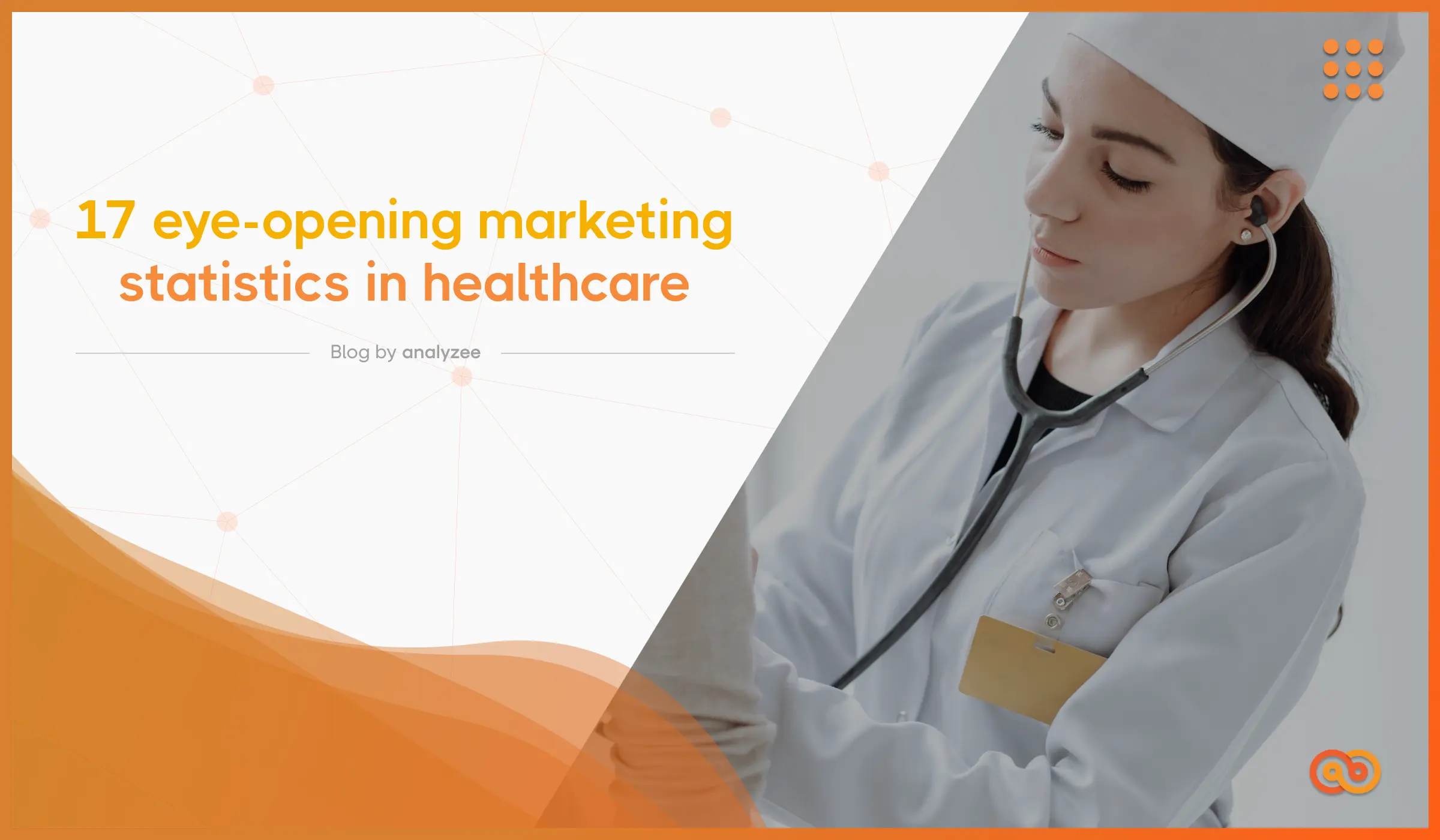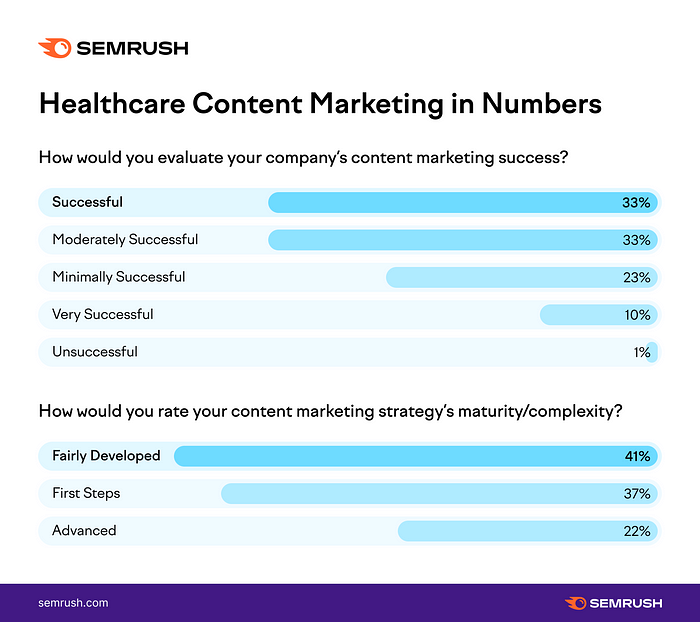17 Eye-opening Marketing Statistics in Healthcare

The healthcare industry is traditionally seen as slow to adopt the latest digital marketing strategies, but recently there has been a shift. Today, it’s leading the charge, implementing innovative marketing techniques that not only attract new clients but also enhance patient satisfaction.
This deep dive into marketing statistics in aims to reveal the impact of marketing on the healthcare sector, highlighting the importance of social media, search engine queries, and digital ad spend.
A Social media case study
Let us demonstrate the power of social media by presenting this long-form study done in a dental clinic on 126 participants. These individuals, previously unaware of the clinic’s services, offered a fresh perspective on the impact of digital marketing.
Methodology and participant selection
The aim of this study was to understand how potential patients discover medical care providers in this digital era. Participants were chosen based on their lack of engagement with the clinic, ensuring accurate study results.
What were the findings?
The study revealed that the internet greatly influences how people select their healthcare providers… but just how significant is that influence?
- 78,57% of participants confirmed that their choice was influenced by online information.
But what were the primary sources of influence?
- Social media platforms: As expected, social media was the primary influencer, with 65% of participants discovering the clinic via platforms like Facebook.
- Vouchers: Right behind social media, 23% were persuaded by voucher-based marketing, highlighting the power of promotional offers.
- Email marketing: Although less prominent, email communications played a crucial role, sending 12% of the participants to the clinic.
Engagement and Loyalty Metrics
The study also dove into engagement levels with healthcare providers on social media:
- An impressive 85% of participants followed at least one healthcare provider, showing a high level of engagement.
- Reflecting on their experience, 90% expressed a willingness to revisit the clinic.
By using online platforms wisely, healthcare providers can greatly increase their visibility and appeal to a modern audience that uses digital technology.
Read the whole case study here: Case Study by PMC
It all begins with a simple search…
Everyone knows that Google and Search Engine Optimization is a prevalent traffic source in general, but how does that reflect in the Healthcare industry? Here’s a closer look:
- A shocking statistic from Google reveals that 1 out of every 20 searches on its platform is related to health. This highlight the very high volume of health-related inquiries and the critical need for healthcare providers to optimize their online content to meet this demand.
Source: Google Blog
- According to Think with Google, 84% of patients turn to the internet for researching hospitals and healthcare facilities before visting them.
Source: Think with Google
- One eye-opening statistic is that there are 70,000 health-related searches every single minute, everyday. This constant stream of inquiries is actually a stream of opportunities for healthcare providers to be visible and accessible online.
Source: NYT
- An amazing 44% of patients who look up hospitals on their mobile devices end up booking an appointment. Think with Google’s report emphasizes the importance for healthcare providers to have mobile-friendly websites.
Source: Think with Google
- Over 60% of future patients look you up on the internet before scheduling an appointment. This once again shows just how important it is to be visible and accessible.
Source: WebinarCare
- Nearly 90% of Americans use social media to look for health-related information. This statistic not only shows the importance of having an online presence but also the need to engage with potential patients on social media platforms.
Source: Healthgrades
For healthcare providers, implementing SEO and establishing a strong online presence isn’t just beneficial — it’s essential.
The opportunity to connect with future patients start with their first search, every click counts.
Digital Ad spend is rising…
Influx of funding for marketing, in general, has been on the rise for a while now, but a particular trend can be noticed in the healthcare industry:
- In 2022, advertising spending in the healthcare sector increased by an impressive 11,5%. This tells us that there is a growing emphasis on marketing efforts in this industry.

Source: InsiderIntelligence
- For the first time ever in 2021, spending on digital advertising surpassed the TV ad spend, marking a monumental shift for the industry.
Source: ZenithMedia
- By 2028, it’s estimated that U.S. healthcare ad spend will skyrocket by 30.36%, spotlighting an aggressive push towards digital methods of patient acquisition.
Source: NYT
The healthcare industry is increasingly leaning into digital marketing, recognizing its power to reach and engage patients effectively. This is setting the stage for innovative patient engagement strategies in the years to come.
Most practices still do not have marketing strategies…
Despite the proven value marketing brings, some healthcare professionals are still hesitant. Their caution often revolves around concerns of maintaining their patients’ trust.
- 33% of healthcare marketers reported achieving a high level of success in their content marketing, while an another 33% have experienced moderate success. Only 10% reported achieveing significant success. This distribution shows you both the effectiveness and challenges regarding content marketing strategies in healthcare.

Source: Semrush
- Shockingly, 72% of healthcare marketers lack a clearly documented content marketing strategy. This clearly highlights an oversight in the industry.
Source: Taylor
- Nearly half (48%) of healthcare marketers prefer to outsource their content development. This trend shows that healthcare marketers often turn to outside experts to create engaging and effective content, highlighting how tough it can be to connect with healthcare audiences.
Source: Semrush
Despite some hesitancy, the trend towards outsourcing and the need for clearer strategies show there’s room to grow. By leaning into these changes, healthcare providers can easily reach and connect with their patients.
Health related content works
Content focusing on solving common patient concerns can bring a lot of traffic to your healthcare organisation. By answering key concerns, you become a go-to resource, improving patient loyalty and your online presence. Let’s take a closer look:
- Healthcare related e-mails see a 41% open rate, highlighting the potential effectiveness of email marketing in this sector.
Source: NYT
- Content marketing generates 3X as many leads as outbound marketing and does so while costing 62% less. Efficient and affordable.
Source: DemandMetric
- 62% of medical professionals think high-quality content is better than product-focused informational materials. This tells us that educating your patients through content is way better than pitching them a substance.
Source: FiercePharma
- In the Medtech sector, half of the professionals reported achieving at least a 20% ROI on their digital marketing strategies and campaigns. Once again proving that it works and should be used.
Source: McKinsey
Final Thoughts
All in all, high-quality, reputable content that targets the right audience still reigns supreme, with Google searches and social media brining in the most traffic. Potential patients are searching constantly for medicine related questions and your site having good content on the subject will surely make them a repeat user of your medical services.